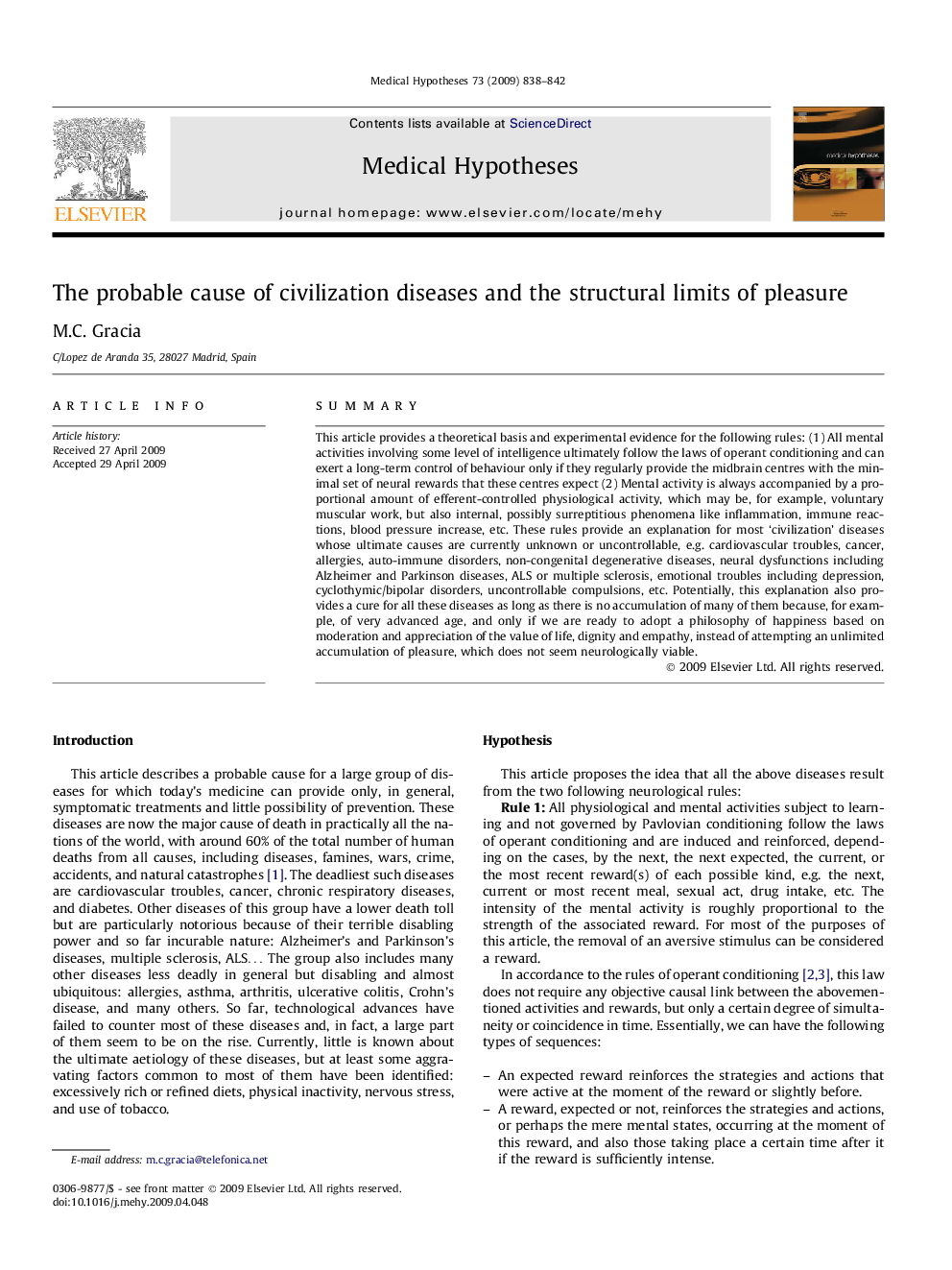| کد مقاله | کد نشریه | سال انتشار | مقاله انگلیسی | نسخه تمام متن |
|---|---|---|---|---|
| 2490588 | 1115069 | 2009 | 5 صفحه PDF | دانلود رایگان |

SummaryThis article provides a theoretical basis and experimental evidence for the following rules: (1) All mental activities involving some level of intelligence ultimately follow the laws of operant conditioning and can exert a long-term control of behaviour only if they regularly provide the midbrain centres with the minimal set of neural rewards that these centres expect (2) Mental activity is always accompanied by a proportional amount of efferent-controlled physiological activity, which may be, for example, voluntary muscular work, but also internal, possibly surreptitious phenomena like inflammation, immune reactions, blood pressure increase, etc. These rules provide an explanation for most ‘civilization’ diseases whose ultimate causes are currently unknown or uncontrollable, e.g. cardiovascular troubles, cancer, allergies, auto-immune disorders, non-congenital degenerative diseases, neural dysfunctions including Alzheimer and Parkinson diseases, ALS or multiple sclerosis, emotional troubles including depression, cyclothymic/bipolar disorders, uncontrollable compulsions, etc. Potentially, this explanation also provides a cure for all these diseases as long as there is no accumulation of many of them because, for example, of very advanced age, and only if we are ready to adopt a philosophy of happiness based on moderation and appreciation of the value of life, dignity and empathy, instead of attempting an unlimited accumulation of pleasure, which does not seem neurologically viable.
Journal: Medical Hypotheses - Volume 73, Issue 5, November 2009, Pages 838–842